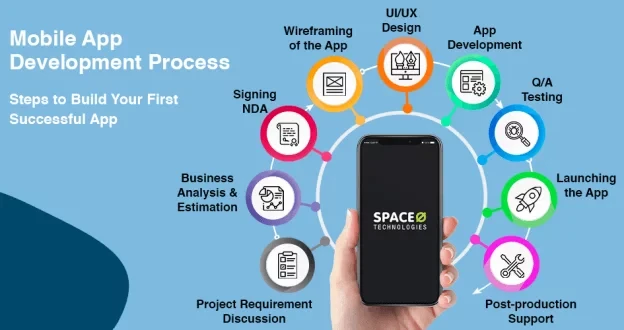In the ever-evolving world of technology, mobile app development is constantly changing to meet the demands of consumers. As we look ahead to 2025, it’s clear that the landscape of mobile app development will continue to shift, with new trends and techniques emerging to drive innovation and enhance user experiences.
1. Embracing Artificial Intelligence and Machine Learning
One of the key trends in mobile app development for 2025 will be the increasing integration of artificial intelligence (AI) and machine learning (ML) technologies. These advanced technologies are already being used in a variety of mobile apps to improve personalization, enhance security, and streamline processes. In 2025, we can expect to see even greater innovation in this area, with AI and ML playing a central role in the development of cutting-edge mobile apps.
2. Enhanced User Experiences with Augmented Reality
Augmented reality (AR) technology has gained traction in recent years, with popular apps like Pokemon Go demonstrating the potential of this immersive technology. In 2025, we can expect to see even more mobile apps incorporating AR features to provide users with engaging and interactive experiences. From virtual try-on features for shopping apps to AR-enhanced navigation systems, the possibilities for AR in mobile app development are virtually limitless.
3. Cross-Platform Development with Progressive Web Apps
Progressive Web Apps (PWAs) are a type of web application that offers a mobile app-like experience within a web browser. In 2025, we can expect to see an increase in the development of PWAs as companies seek to reach users across multiple platforms without the need for separate native apps. PWAs offer a number of benefits, including faster load times, offline functionality, and the ability to send push notifications, making them an appealing option for businesses looking to expand their reach in the mobile app market.
4. Focus on Cybersecurity and Data Privacy
With the rise of data breaches and privacy concerns, cybersecurity and data privacy will continue to be top priorities for mobile app developers in 2025. From implementing secure authentication methods to ensuring compliance with regulations like GDPR, developers will need to take proactive steps to protect user data and build trust with consumers. By prioritizing cybersecurity and data privacy, developers can mitigate risks and build apps that users can rely on to keep their information secure.
5. Integration of Internet of Things (IoT) Technology
The Internet of Things (IoT) is a network of interconnected devices that can communicate and share data with each other. In 2025, we can expect to see more mobile apps integrating IoT technology to enable users to control smart devices, monitor home security systems, and track health and fitness goals. By harnessing the power of IoT, developers can create apps that provide users with personalized experiences and seamless connectivity across their devices.
6. Agile Development Methodologies for Rapid Iteration
Agile development methodologies have become increasingly popular in the world of mobile app development, allowing teams to work collaboratively and adapt quickly to changing requirements. In 2025, we can expect to see more developers embracing Agile practices to deliver apps more efficiently and effectively. By following Agile principles, developers can iterate rapidly, gather feedback from users, and make adjustments as needed to ensure the success of their apps in the competitive mobile app market.
Conclusion
As we look ahead to 2025, the future of mobile app development is filled with exciting possibilities. From the integration of AI and AR technologies to the rise of PWAs and IoT integration, developers have a wealth of tools and techniques at their disposal to create innovative and engaging mobile apps. By staying ahead of trends and embracing new technologies, developers can position themselves for success in the dynamic world of mobile app development.


